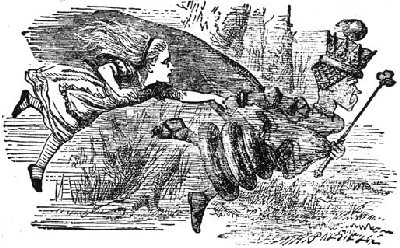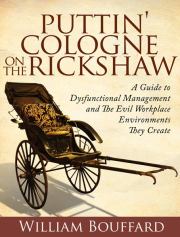The clinical Alice-in-Wonderland Syndrome is a disorienting neurological condition that affects human perception. Patients suffering this syndrome either experience microspia or macrospia.
Microspia is the abnormal condition where the person sees things smaller than they really are. Macrospia, on the other hand, is a condition where the individual sees everything larger than they actually are and is the condition that is in effect when an organization suffers the Alice
in Wonderland Syndrome. While the actual malady pertains to how people perceive objects around them, in the case of organizations it refers to how they perceive situations, i.e., their perception of events around them.
In an organization with this crippling condition, every problem, no matter how inconsequential, becomes larger than life and is blown
out of proportion to its real threat to the organization. Little issues that, in a normal organization, would be handled by front-line supervision,
need to percolate up through the organization to the upper most levels of management. It’s not that these front-line supervisors can’t solve problems it’s that they’re not allowed to solve problems without management help.
Organizations with this malady suffer a universal sense of paranoia and the organization becomes a culture of fear, and fear is incapacitating. People ultimately become unable to solve problems without the intervention of the upper management.
Every little issue is brought immediately to the forefront and the organization suffers the “student body left” knee-jerk reaction routinely. Action items abound and the organization is mired down in fire-fighting to the detriment of the overarching goals of the organization. When management is stricken with the Alice in Wonderland Syndrome their perverted view of the world seeps into the very culture of the organization.
The Alice in Wonderland Syndrome is closely related to the Chicken Little Syndrome that I cover in my book, Puttin’ Cologne on the Rickshaw.
In this syndrome management is crippled with the fear of anything that will upset their house of cards, thus they become afraid of any surprise that may derail the business or reveal how ill prepared they are for handling any problem or conflict that threatens their business. These are the organizations with a weak vision of what they want to be and an even weaker strategy for how to get there.
So how does The Alice in Wonderland Syndrome get started in an organization? Remember the old truism, “the neck of every bottle is at the top.” In modern business no truer statement can be made. This syndrome always starts with the upper most tier of the organization, infecting individuals in how they perceive themselves in relation to everyone and everything around them. In other words, they have an altered view of their own self-image seeing themselves as omnipotent figures and indestructible.
However, their sub-conscience knows the truth and thus they are gripped with the fear of anything that may upset their apple cart and tarnish their facade. This explains nicely the narcissistic behavior of many sociopaths in management positions. They begin to see themselves as bigger than life and deserving to the position they hold. And they will try to hold that position at any cost.
Remember in the book Alice is changed in size when she eats of the mushroom? But in business, the mushroom is replaced by ego and hubris
and the thing that changes size are the leaders’ self-perception, and more importantly, their perception of all that is happening around them.
When added to the fact that most organizations are just one crisis away from non-existence, the stakes become higher every time there’s a problem. Thus every problem is blown out of proportion to its threat. When this crippling behavior infects an organization it filters down the organization until all are infected.
[So] the Alice in Wonderland Syndrome becomes another contributor to the ultimate demise of a poorly run organization, all under the guise of trying to save the organization. It’s like a cancer ultimately killing the host.
William Bouffard



